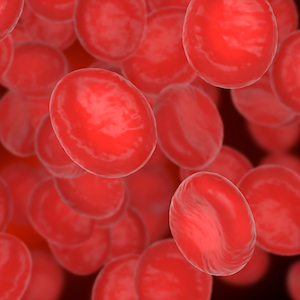Plasma fibrinogen levels and all-cause and cause-specific mortality in an Italian adult population: results from the Moli-sani study

Submitted: 21 June 2022
Accepted: 16 December 2022
Published: 27 January 2023
Accepted: 16 December 2022
Abstract Views: 1416
PDF: 356
APPENDIX: 61
APPENDIX: 61
Publisher's note
All claims expressed in this article are solely those of the authors and do not necessarily represent those of their affiliated organizations, or those of the publisher, the editors and the reviewers. Any product that may be evaluated in this article or claim that may be made by its manufacturer is not guaranteed or endorsed by the publisher.
All claims expressed in this article are solely those of the authors and do not necessarily represent those of their affiliated organizations, or those of the publisher, the editors and the reviewers. Any product that may be evaluated in this article or claim that may be made by its manufacturer is not guaranteed or endorsed by the publisher.
Most read articles by the same author(s)
- Augusto Di Castelnuovo, Licia Iacoviello, Moving beyond p-value , Bleeding, Thrombosis and Vascular Biology: Vol. 1 No. 1 (2022)
- Giovanni de Gaetano, Chiara Cerletti, Licia Iacoviello, Maria Benedetta Donati, The night of randomized clinical trials where all patients are black: a need to estimate variability in treatment effects , Bleeding, Thrombosis and Vascular Biology: Vol. 1 No. 1 (2022)
- Giovanni de Gaetano, Well begun is half done , Bleeding, Thrombosis and Vascular Biology: Vol. 1 No. 3 (2022)
- Giovanni de Gaetano, Welcome to AICE and sincere wishes for peace for the new year 2024 , Bleeding, Thrombosis and Vascular Biology: Vol. 2 No. 4 (2023)
- Benedetta Izzi, Simona Costanzo, Alessandro Gialluisi, Amalia De Curtis, Sara Magnacca, Teresa Panzera, Augusto Di Castelnuovo, Maria Benedetta Donati, Chiara Cerletti, Marc F. Hoylaerts, Giovanni de Gaetano, Licia Iacoviello, *on behalf of the Moli-sani Study Investigators, Platelet distribution width is associated with cardiovascular mortality in an adult general population , Bleeding, Thrombosis and Vascular Biology: Vol. 2 No. 3 (2023)
- Giovanni de Gaetano, Chiara Cerletti, Blood platelets, prostaglandins and aspirin: a historical and personal rereading , Bleeding, Thrombosis and Vascular Biology: Vol. 3 No. 1 (2024)
- Marialaura Bonaccio, Licia Iacoviello, Maria Benedetta Donati, It’s definitely time to consider diet in its ultra-processing form as a major risk factor for thrombotic vascular disorders , Bleeding, Thrombosis and Vascular Biology: Vol. 2 No. 3 (2023)
- Giovanni de Gaetano, Science in Ukraine is “bleeding” , Bleeding, Thrombosis and Vascular Biology: Vol. 2 No. 1 (2023)
- Giovanni de Gaetano, Da la scheggia rotta usciva insieme parole e sangue: an unusual case of bleeding and the metaphor of a clinical trial , Bleeding, Thrombosis and Vascular Biology: Vol. 3 No. 3 (2024)
- Giovanni de Gaetano, Artificial intelligence, platelets and aspirin , Bleeding, Thrombosis and Vascular Biology: Vol. 3 No. 1 (2024)
Similar Articles
- Benedetta Izzi, Simona Costanzo, Alessandro Gialluisi, Amalia De Curtis, Sara Magnacca, Teresa Panzera, Augusto Di Castelnuovo, Maria Benedetta Donati, Chiara Cerletti, Marc F. Hoylaerts, Giovanni de Gaetano, Licia Iacoviello, *on behalf of the Moli-sani Study Investigators, Platelet distribution width is associated with cardiovascular mortality in an adult general population , Bleeding, Thrombosis and Vascular Biology: Vol. 2 No. 3 (2023)
- Francesca Santilli, Paola Simeone, Rossella Liani, Inflammation, platelets and diabetes , Bleeding, Thrombosis and Vascular Biology: Vol. 2 No. 2 (2023)
- Cristina Santoro, Alessandro Casini, Addressing some challenges of congenital fibrinogen disorders in 2023 and beyond , Bleeding, Thrombosis and Vascular Biology: Vol. 2 No. 3 (2023)
- Daniela Poli, Walter Ageno, Emilia Antonucci, Salvatore Bradamante, Eugenio Bucherini, Paolo Chiarugi, Antonio Chistolini, Benilde Cosmi, Anna Falanga, Antonio Insana, Domenico Lione, Rosa Maria Lombardi, Giuseppe Malcangi, Rossella Marcucci, Giuliana Martini, Lucilla Masciocco, Carmelo Paparo, Daniele Pastori, Simona Pedrini, Vittorio Pengo, Pasquale Pignatelli, Andrea Toma, Sophie Testa, Gualtiero Palareti, Management of anticoagulation in atrial fibrillation patients in Italy: insight from the Atrial Fibrillation-Survey on Anticoagulated Patients Register (AF-START) , Bleeding, Thrombosis and Vascular Biology: Vol. 2 No. 2 (2023)
- Stefania Momi, Giuseppe Guglielmini, Giulia Ciarroca Taranta, Elisa Giglio, Angela Monopoli, Paolo Gresele, A nitric oxide-donor pravastatin hybrid drug exerts antiplatelet and antiatherogenic activity in mice , Bleeding, Thrombosis and Vascular Biology: Vol. 1 No. 2 (2022)
- Setor K. Kunutsor, Sudhir Kurl, Ari Voutilainen, Jari Laukkanen, Circulating albumin-to-fibrinogen ratio may be a risk indicator for venous thromboembolism: findings from a population-based prospective cohort study , Bleeding, Thrombosis and Vascular Biology: Vol. 1 No. 2 (2022)
- Kristen M. Sanfilippo, Tzu-Fei Wang, Venous thromboembolism and mortality in patients with hematological malignancies , Bleeding, Thrombosis and Vascular Biology: Vol. 3 No. s1 (2024): 12th ICTHIC
- Luca D'Ambrosio, Maurizio Forte, Giacomo Frati, Sebastiano Sciarretta, Role of platelet autophagy in cardiovascular diseases , Bleeding, Thrombosis and Vascular Biology: Vol. 3 No. 2 (2024)
- Anne Eichmann, The Lefoulon Delalande Foundation honors the lymphatic vascular system , Bleeding, Thrombosis and Vascular Biology: Vol. 2 No. 4 (2023)
- Mattia Galli, C. Michael Gibson, Dominick J. Angiolillo, Factor XI inhibitors in adjunct to antiplatelet therapy: the ultimate dual-pathway inhibition? , Bleeding, Thrombosis and Vascular Biology: Vol. 2 No. 3 (2023)
You may also start an advanced similarity search for this article.

 https://doi.org/10.4081/btvb.2023.46
https://doi.org/10.4081/btvb.2023.46








